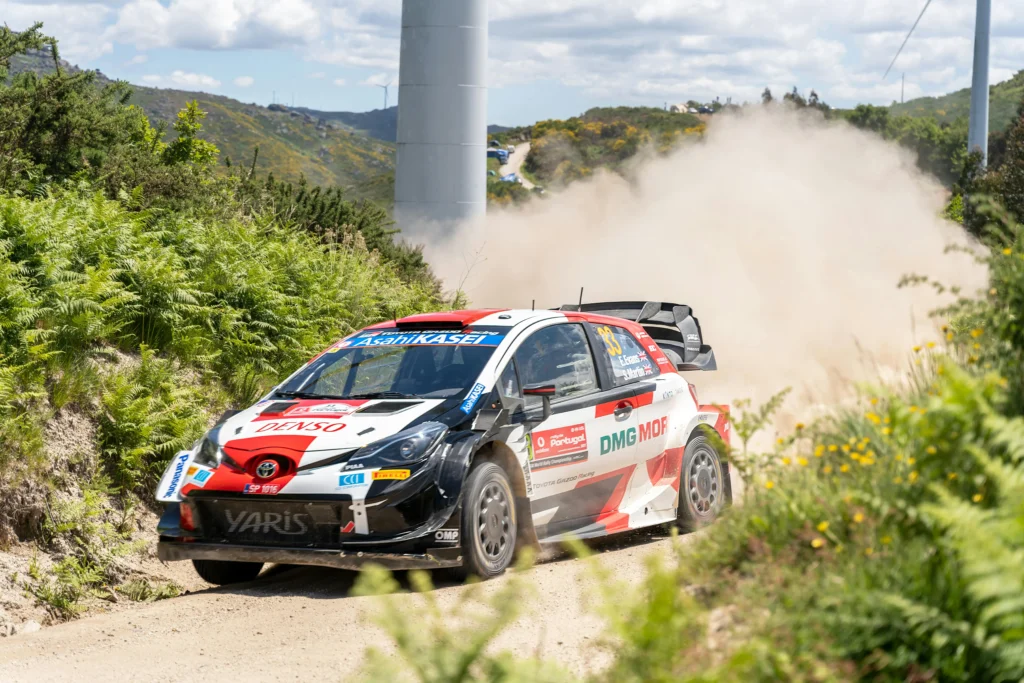Learning how to become a WRC driver requires mastering one of motorsport’s most challenging disciplines. The World Rally Championship stands as an elite competition where drivers must conquer every conceivable surface and condition, from ice-covered mountain passes to scorching desert tracks. In this arena of professional rallying, few stories captivate like that of Kalle Rovanperä, who became the youngest-ever WRC champion, revolutionizing our understanding of what’s possible in this sport. Meanwhile, veterans like Sébastien Ogier, with eight world titles to his name, demonstrate that adaptability remains key in the ever-evolving world of rally racing. So what exactly makes a great rally driver, and how does one embark on this thrilling journey?
In This Guide
The Core Attributes of a WRC Driver
Natural Talent Meets Mental Fortitude
Success in WRC demands an exceptional blend of natural driving talent and unwavering mental strength. While raw skill behind the wheel is fundamental, the ability to maintain composure under pressure often separates champions from contenders. Rovanperä exemplifies this perfect storm of attributes – his innate car control combined with an remarkably calm demeanor has proven to be a winning formula in the high-stakes world of rally racing.
Early Start vs. Late Bloomers: Pathways to Rallying
The Young Prodigy’s Path
Mastering car control for WRC typically requires years of dedication and practice. Rovanperä’s journey serves as a testament to the advantages of starting young – from riding buggies at age three to driving at six and competing by eight. His self-taught approach to developing driving skills showcases how natural talent can flourish when nurtured from an early age.
Breaking the Age Barrier
Unlike Formula 1, rally driving often sees competitors peak later in their careers. The existence of the WRC Masters Cup, designed for drivers over 50, demonstrates the sport’s unique age dynamics. Late starters like Sébastien Loeb, Carlos Sainz, and Sébastien Ogier have all achieved remarkable success, proving that passion and dedication can overcome a later entry into the sport.
Essential Requirements: Licensing and Accessibility
Unlike Formula 1’s super license system, WRC’s entry requirements focus on standard driving permits and FIA approval. Rovanperä’s early career in Latvia highlights how some regions offer more accessible paths into the sport, where competitors can participate without traditional licenses, provided they have support systems in place.
Mentorship and Self-Reliance: Learning from Others
The Value of Experience
Having a mentor with WRC experience can prove invaluable, as demonstrated by Rovanperä’s relationship with his father, a former WRC driver. However, the most successful drivers balance external guidance with trust in their own instincts and developing style.
Competition and Progression: Building a Career
Starting in local racing clubs and regional competitions provides crucial experience and exposure. Rovanperä’s rapid ascent through Latvian and Italian championships to WRC2 victory showcases how talent combined with the right opportunities can accelerate career progression.
Diverse Training: Enhancing Rally Skills
Cross-Discipline Development
Successful rally drivers often develop their skills through various disciplines. From snowmobiling to buggy racing and drifting, each activity contributes unique elements to a driver’s skill set. Rovanperä’s involvement in drifting events exemplifies how different motorsport disciplines can complement WRC preparation while providing valuable stress relief.
Service Park Dynamics: Skills and Connections
Building a reputation within the rally community often requires more than just driving talent. Viral moments, like Rovanperä’s famous videos, can attract attention from team bosses and sponsors. Additionally, working with experienced driver managers, such as Timo Jouhki, can provide crucial guidance in navigating the sport’s professional landscape.
Global Practice Grounds: Different Terrains and Conditions
Worldwide Experience
The global nature of rallying demands experience across varied terrains and conditions. Championships like the British Rally Championship (BRC) offer valuable opportunities to develop skills in specific conditions, while international exposure helps drivers adapt to diverse challenges.
Beyond Driving: The Co-Driver Partnership
The unique nature of rally racing places immense importance on the driver-co-driver relationship. Rovanperä’s partnership with the experienced Jonne Halttunen highlights how complementary skills and effective communication can enhance performance. Former F1 driver Robert Kubica’s transition to rallying further emphasizes the distinct challenges and learning curve associated with rally navigation and pace notes.
Physical and Mental Preparation
Holistic Training Approach
Success in WRC requires peak physical conditioning and mental resilience. Beyond physical training, maintaining mental well-being through relaxation and strong personal relationships helps prevent burnout in this demanding sport.
Adaptability and the Pursuit of Victory
Modern WRC drivers must constantly adapt to evolving technology and regulations. Perhaps most challenging is developing the ability to win consistently – a skill that comes with experience and countless hours of practice.
Conclusion: How to become a WRC driver
The path to becoming a WRC driver demands an extraordinary combination of talent, dedication, and adaptability. As Rovanperä’s record-breaking championship victory demonstrates, success in this sport requires mastering not just the physical aspects of driving, but also the mental fortitude to perform under pressure. Whether starting young or entering the sport later in life, the key lies in passionate dedication to continuous improvement and the ability to thrive in the sport’s ever-changing conditions.


like it
Pingback: what is rally racing : A High-Speed Off-Road Adventure Guide
Pingback: how to become nascar driver : 7 Proven Steps